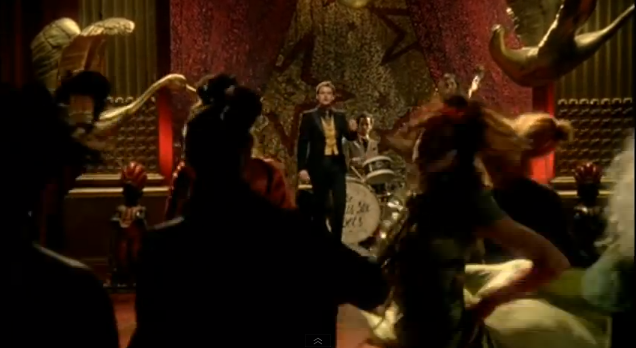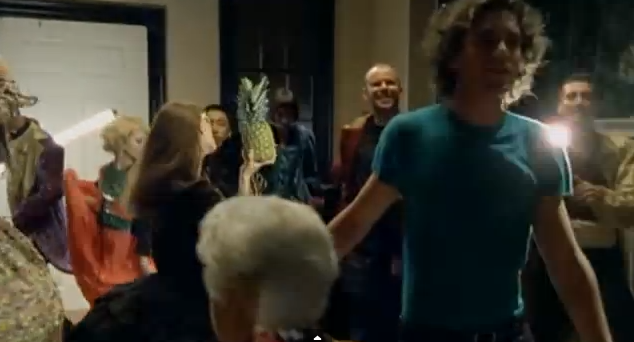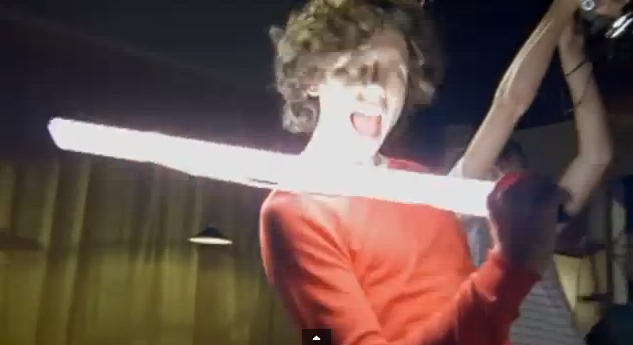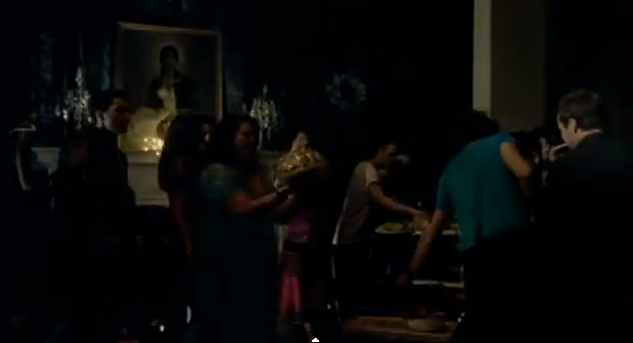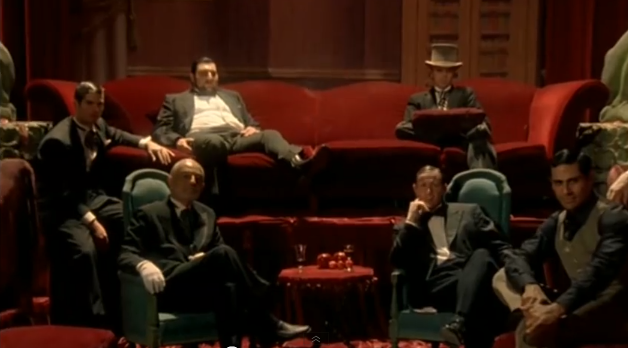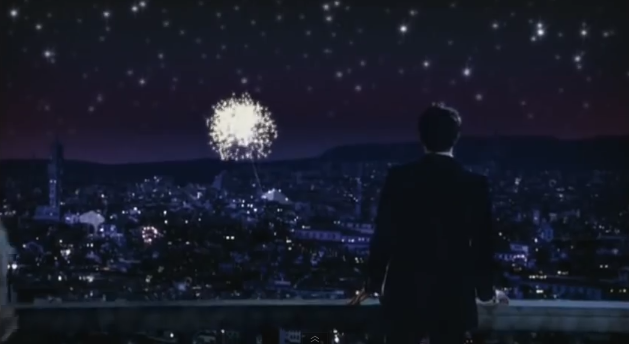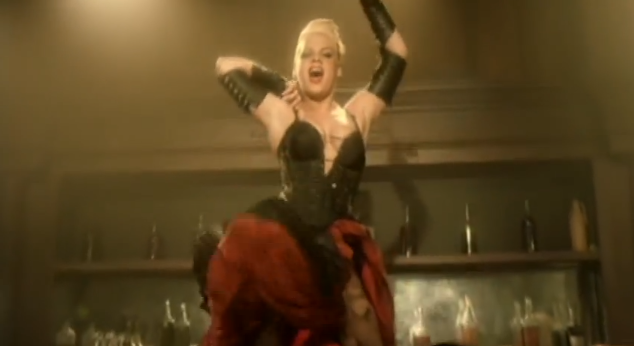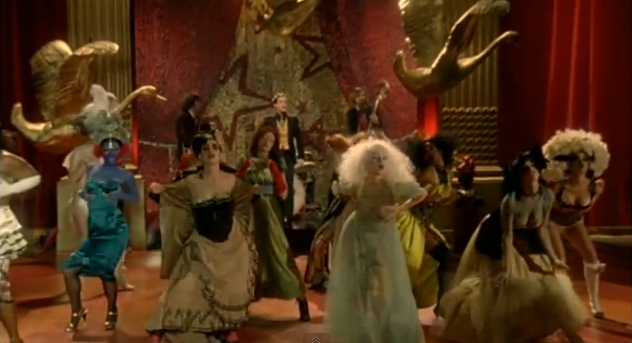The industry makes money out of the musician(s) and their work, and therefore they want to promote the artists through the videos so that it encourages people to buy their music and would generate a profit. If people enjoy the video, and want to listen to that song and others from the same artist, they would then go and spend money on buying their songs, and the record labels would generate money through the sales. It benefits the musicians too, however, as videos - especially ones that include the artist(s) actually performing - often encourage fans to buy tickets for gigs and to see them live.
And it's not only the artist that it's promoting - the film maker, such as Sophie Muller, is able to use the videos to express their creativity, such as the way she comes up with a variety of ideas to bring the songs to life on the screen. She's also extremely creative through the way she mixes concept videos, or narrative videos together with performance aspects, but does so in a way in which they work well together and fit the music, involving and interesting the audience. Directors can also can use the videos that they create in their portfolios to attract attention from others and gain more popularity and work in the video industry, benefiting them too. Although Sophie Muller doesn't particularly have a distinctive style when it comes to her music videos, she has been in the industry for a few decades and has made her name by working with a number of top musical artists to create memorable videos, and this allows her to continue to attract work from other artists.
It's also a way for the audience and the musicians to feel closer to each other, however, as it is common for the artist to perform during the video and the fans of the artists can easily watch them do so from the comfort of their own home. This gives something of a connection between the artist and the fans, and makes the fans more interested in the artists. However, music videos are not just for entertainment, and can be used to portray a message, or make the audience think about certain things that the film maker and/or the artist wants them to consider - whether this is a political or a moral message, or something completely different. Artists are often considered to be more influential than politicians, and this is one of the ways they can show people their messages.
Sophie Muller is an English music video director who has
been making videos since the 80s, and is well-known with creating videos for
artists such as No Doubt, Sade, The Killers, Blur, Annie Lennox and many more artists
in long-term collaborations. Her music videos usually consist of portraying the
artist’s feelings through the video, simply by filming them performing whilst
being isolated in a dim room, however she also has worked on other videos with
a completely different style, such as the three music videos that I will be
looking at. These are:
‘Trouble’ by P!nk (2003).
‘Mr Brightside’ by The Killers (2004).
‘Grace Kelly’ by Mika (2007).
They all seem quite lively and energetic videos, which is
different from some of her other darker and more simpler videos, though both ‘Trouble’
and ‘Mr Brightside’ also have a little bit of a serious undertone to them -
with P!nk freeing the Western town from the oppressing sheriff and his group, whilst
the storyline of the girl in ‘Mr Brightside’ being about her in a love triangle
with a man and the lead singer from the band itself. They all also include
lively scenes, and all three involve a party of some sort – with ‘Grace Kelly’
being focused on a house party or an energetic photo/film shoot, ‘Mr Brightside’ being set at something similar to
a burlesque show, and ‘Trouble’ having some scenes within a bar where later in
the video quite a bit of dancing takes place. Not only are the videos lively,
but there is also a dance sequence of some form being shown in each of the videos
at one point or another, which manages to fit in well with the pace and ideas of
the videos.
These three music videos are most likely directed towards
people in their late teens and early 20s, as well as for fans of the artists.
They are fast-paced and quite dimly lit, with two having slightly more serious
backstories to them then you would first imagine, which would draw in the interest
of this particular group of people. Meanwhile, older people would probably not be able to keep up with the speed of the cuts within the videos, whilst younger children would simply be confused by what is happening within them. With the backstories, for example, during 'Mr Brightside', it seems to be about a complicated love triangle set at a burlesque show, but also seems to be reminiscent of a 2001 film called 'Moulin Rouge!' where a similar storyline takes place. Also, during 'Trouble', the backstory of the video is about P!nk freeing a small town from male oppression, with everything set in an old Western town.
All of the videos are cut quite quickly, which makes them
feel lively and energetic – grabbing the audience’s attention and making them
interested to continuing to watch the video. The videos also include some kind of
performance aspect during them, with the singer/band performing - even if it is
only for certain parts of the video and not the entire thing. Although they all
have these features of performance within them, it is clear that ‘Trouble’ and ‘Mr
Brightside’ are also quite focused on being narrative, whilst ‘Grace Kelly’
shows faint signs of all three, seeing as it is rather conceptual too, with
random scenes appearing that make little sense but are still amusing to the
audience.
There are often a lot of scenes in the music videos where
the camera quickly zooms in/out on a certain object or person, which highlights
an important part of the video – whether that is an object or a person – and
this makes the video seem snappy and upbeat. Also, barely any of the shots in
any of the three videos seem to stay still. They all move in some way, whether
it’s zooming in and out, panning, or the slight shakiness of a handheld shot. This
engages the audience and makes them feel as though they are closer to the
events of the videos, helping to attract their interest and attention of the
audience that it is aimed towards. For example, during 'Trouble', the camera zooms in quickly on the sheriff of the city, introducing him as a key character within the music video, and also the horse's injuries, showing why she is suddenly angry with the men nearby. During 'Grace Kelly', the camera occasionally zooms in and out on Mika quickly, matching the tempo of the music and making the clip seem more interesting than it originally would have done without the effect.
During ‘Mr Brightside’ and ‘Grace Kelly’, the lighting is
quite dark. In ‘Grace Kelly’ you can clearly see lights being held by people
within the video, lighting certain people up, or creating interesting dance sequences
with the handheld lights. Within this video, a lot of the people in the shots
can barely be seen because they are in the dark, or their faces are hidden by
shadows. During ‘Trouble’, the lighting seems to be quite natural, but also
rather murky for most of the scenes to give it the impression of being almost
like a ‘Wild West’ film with cowboys and Indians. ‘Mr Brightside’ also seems
quite dimly lit, with an almost smoky atmosphere inside the room that it’s
filmed in, giving it a slightly darker feel to it than the ‘Grace Kelly’ video,
which wasn’t lit quite as much although still had more of a cheerful and happy
feel to it whereas ‘Mr Brightside’ was more serious.
In ‘Trouble’, P!nk is wearing a rather revealing dress, and
so are the other women that appear later on in the video which shows the idea
of voyeurism being used. She also performs some suggestive dances, as well a
scene where she seduces the town’s sheriff in light foreplay to get herself out
of jail. Within ‘Mr Brightside’, all the women are wearing skimpy-ish dresses
and performing a dance similar to the can-can, as well as the main woman often performing
provocative dances around a couple of the characters, although ‘Grace Kelly’
shows no sign of voyeurism at all.
All these videos seem to be mostly for entertainment, as
well as marketing the song and artist which is generally why videos are created in the first place. They are all created in a upbeat way
which makes people interested in watching them, and the storylines behind them
are there for entertainment purposes rather than to portray a serious message.
They also manage to express the feelings of the songs through the videos – with
‘Grace Kelly’ being based on musical artists trying to change themselves to be
popular, ‘Trouble’ being about someone freeing a town from a controlling sheriff,
and expressing her thoughts on male oppression and rebellion whilst ‘Mr
Brightside’ is dealing with a complicated love triangle. ‘Grace Kelly’ was also
written by Mika to express his feelings when the record company wanted to
change him to be more like other artists, which he disagreed with, and although
the video doesn’t show this through a narrative, you can grasp the basic
concept of his feelings within the song through the video itself.
I personally really enjoyed watching these music videos;
they’re engaging, energetic and are amusing to watch. They also match the music
track really well, and two successfully tell a story as they have attempted to.
The editing matches the speed and tempo of the music, and the cinematography
gives them a lively feel to it which makes me want to watch them more than once
instead of changing the channel if these videos appeared on a music channel on
my television.
